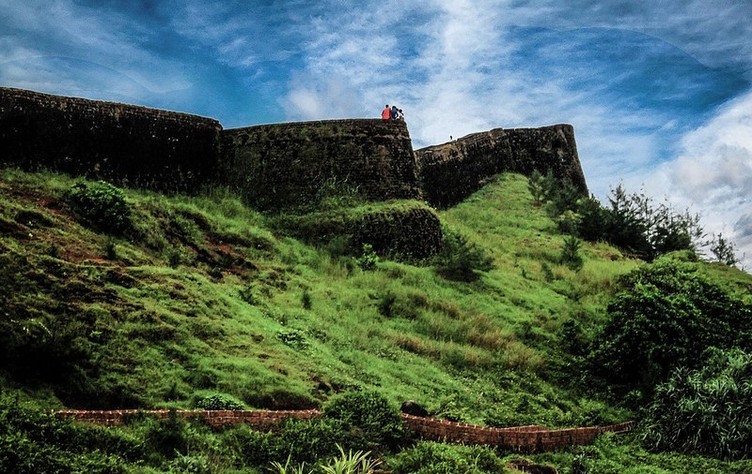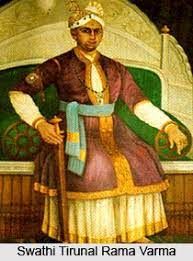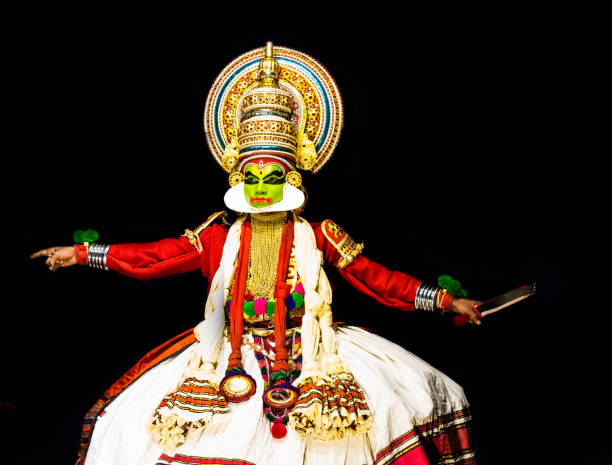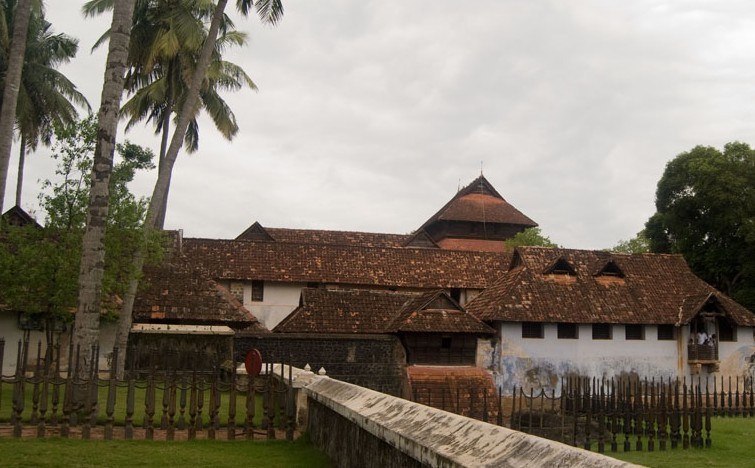Introduction
Historical Places of Kerala: Unveiling Its Rich Heritage
Historical Places of Kerala in this blog let us explore Kerala, often referred to as “God’s Own Country,” is not just a land of pristine backwaters and lush green landscapes but also a treasure trove of historical gems that hold tales of the past. In this journey through time, we will delve into the fascinating historical places in Kerala, uncovering the ancient Kerala history, its origins, the rise and fall of kingdoms, remarkable rulers, the amalgamation of Kerala’s history and culture, the historical background that shaped the region, and the awe-inspiring monuments that stand as testaments to its vibrant past.

Ancient Kerala
Ancient Kerala History and Origin – Tracing Kerala’s Roots Through Time
Kerala’s history stretches back through the annals of time, offering a captivating glimpse into its ancient origins and the diverse cultures that have shaped this remarkable land.
Prehistoric Traces: A Journey to the Stone Age
Long before recorded history, Kerala was home to early humans during the Stone Age. Archaeological excavations on various sites throughout the region have revealed pottery, tools and other artifacts offering valuable insights into the life and culture of these early inhabitants. The presence of these objects suggests that Kerala’s history dates back to at least f few millennia.
Emergence of Early Civilization: The Iron Age
As time marched forward, Kerala began to witness the emergence of more organized societies during the Iron Age. The region’s coastal location and fertile plains attracted settlers and traders, contributing to the growth of distinct communities. They also traded with other regions, trading commodities such as timber, spices, as well as precious metals. This time marked the beginning of Kerala’s interaction with the outside world. It also set the stage for the future of Kerala as a crossroads for culture.
Early Contacts and Influences: Ancient Trade Routes
Kerala’s strategic location along ancient trade routes played a pivotal role in shaping its history. Traders from the Mediterranean, Middle East, and Asia navigated the Arabian Sea, bringing with them a diverse array of goods, ideas, and cultures. The maritime Silk Road, for instance, connected Kerala with civilizations as far-reaching as Rome, Persia, and China. This exchange of goods and ideas infused Kerala with a unique cosmopolitanism that would define its identity for centuries to come.
Formation of Kingdoms: The Rise of the Chera Dynasty
Around the 3rd century BCE, the Chera dynasty emerged as a dominant force in Kerala’s history. With their capital at modern-day Kodungallur, the Cheras established a robust trade network that spanned across the Indian Ocean. Their maritime prowess allowed them to control the lucrative spice trade, fostering cultural exchanges and diplomatic ties with foreign powers. The Cheras left behind inscriptions and artifacts that provide valuable insights into their rule and the flourishing society they presided over.
Cultural Flourish: Ancient Arts and Sciences
During this period, Kerala experienced a significant cultural and intellectual renaissance. The region was transformed into a hub of learning, with scholars were engaged in studying math, astronomy, medicine and literature. The “Yuktikalpataru,” a mathematical treatise composed in Kerala, demonstrated advanced knowledge in various fields. Additionally, the ancient Kerala school of astronomy and mathematics made pioneering contributions to these disciplines.
The Threads of Time: Kerala’s Enduring Legacy
As we explore the ancient history and origin of Kerala, we find ourselves immersed in a rich tapestry woven with the threads of time. From its prehistoric roots and the emergence of early civilizations to the rise of influential dynasties and the exchange of cultures along ancient trade routes, Kerala’s history is a testament to its enduring significance in shaping the course of history. The foundations laid by these ancient times continue to echo in the traditions, culture, and identity of the modern state of Kerala.
Ancient Kerala Kings
Kerala Kingdoms and Rulers: Guardians of History

The story of Kerala is full of tales of mighty kingdoms and leaders who were visionary and played crucial parts in shaping the future of the region. Let’s explore the annals of time to find the stories of some the most prominent rulers from diverse kingdoms, including Travancore, Kochi, Malabar and various princely states.
Travancore:
Rulers Who Pioneered Progress
Travancore, known for its progressive outlook and visionary rulers, left an indelible mark on Kerala’s history. One of its most renowned rulers was Maharaja Swathi Thirunal Rama Varma. Reigning from 1829 to 1846, he was not only a gifted musician but also a patron of the arts. His reign saw advancements in education, law, and infrastructure. Another notable figure was Maharaja Sree Chithira Thirunal Balarama Varma, who led Travancore during a crucial period of transition. He was instrumental in ushering in reforms, including the Temple Entry Proclamation of 1936, which granted access to temples for all Hindus, irrespective of caste.
Kochi:
A Legacy of Cultural Fusion
The Kochi kingdom, situated along the Arabian Sea, was known for its strategic location and rich cultural blend. Rulers like Raja Kesava Das and Rama Varma XV ensured that Kochi maintained its cosmopolitan character. Raja Kesava Das played a vital role in fostering ties with European powers, allowing Kochi to thrive as a hub for trade and cultural exchange. Rama Varma XV, also known as Sakthan Thampuran, is celebrated for his administrative reforms and patronage of art forms like Kathakali and Thullal.
Malabar:
From Zamorins to British Colonialism
Malabar, under the Zamorin rulers, flourished as a prominent trading center. The Zamorins of Calicut, such as Manavikraman Raja and Pazhassi Raja, were key figures in Kerala’s history. Manavikraman Raja, during the 16th century, extended his patronage to art and culture, leaving a lasting legacy. Pazhassi Raja, on the other hand, led a valiant resistance against British colonial forces, earning him the moniker “Lion of Kerala.” His heroic efforts in the face of adversity have become legendary.
Other Princely States:
Preserving Traditions and Independence
Kerala was also home to several other princely states, each with its own unique rulers and contributions. The ruler of Cochin, Rama Varma, is remembered for his significant role in the formation of the State of Travancore-Cochin after India’s independence. In the Malabar region, the Kottayam royal family, under Raja Ravi Varma, nurtured the artistic talents of the renowned painter Raja Ravi Varma, who went on to become a national treasure.
Legacy and Impact:
These rulers and their kingdoms have left an enduring legacy that continues to influence Kerala’s culture, society, and governance. The charismatic direction of the rulers set the foundation for Kerala’s new identity, focusing on education, social reform and the preservation of culture. Their contribution is etched in the collective memories of the people of Kerala and remind us of the significance in stewardship and leadership to shape the development of the historical events.
While we explore the lands that comprise Travancore, Kochi, Malabar and other princely states there is a rich tapestry of rulers who controlled their territories with knowledge and foresight. They also displayed a unwavering dedication to the wellbeing for their subjects. The stories of their ancestors serve as sources of inspiration, leading us along the lane of time in order to understand the amazing background of Kerala.
Kerala History
Kerala History and Culture: A Harmonious Blend

Culture as a Reflection of History
Kerala’s vibrant culture is evidence of its rich past that was shaped by centuries of interactions with influences, cultures, and customs. This section explores the distinctive aspects of Kerala’s history as well as culture, highlighting the distinctive artistic styles, festivals and customs that have developed throughout time.
Cultural Melting Pot: The Tapestry of Influences
Kerala’s history is marked by its interactions with diverse cultures from around the world. Its strategic coastal location made it a hub for traders, explorers, and settlers, resulting in a cultural melting pot. The Arab, Chinese, European, and Indian influences seamlessly blend in Kerala’s architecture, cuisine, and way of life. For instance, the Chinese fishing nets along the coast of Kochi are a living testament to the cross-cultural exchanges that have taken place over centuries.
Art Forms: Expressions of Tradition
Kerala’s art forms are deeply rooted in its history and culture. Kathakali, a traditional dance-drama, combines elements of dance, music, and drama to depict mythological stories. Mohiniyattam, another classical dance form, is characterized by graceful movements and intricate gestures. These art forms serve as conduits for conveying narratives from ancient texts, preserving stories that have been passed down through generations.
Festivals: Celebrations of Diversity
Kerala’s festivals are a vibrant reflection of its multicultural history. Onam, the harvest festival, unites people of different communities in celebrating abundance and togetherness. The Thrissur Pooram, a grand temple festival, showcases a dazzling array of elephants, percussion ensembles, and a spirit of communal harmony. Vishu, the Malayalam New Year, is marked by the “Vishu Kani,” an arrangement of auspicious items that symbolizes prosperity and good fortune.
Spirituality and Faith: A Kaleidoscope of Beliefs
Religion is an integral part in Kerala’s society, and the diversity of its religion is the result of past interactions. Hinduism, Christianity, Islam and various other religions are able to coexist in harmony. The Sree Padmanabhaswamy Temple in Thiruvananthapuram The St. Thomas Syro-Malabar Catholic Church in Palayur as well as Palayur’s Cheraman Juma Mosque in Kodungallur are all examples of Kerala’s syncretic history.
Literature and Education: Pioneers of Knowledge
Kerala’s history also encompasses a rich tradition of literature and education. The state’s literacy rate, one of the highest in India, can be traced back to its historical emphasis on knowledge. Ancient texts like the “Ramacharitam” and “Unnunili Sandesam” showcase the literary prowess of Kerala’s past. The establishment of universities and centers of learning, such as the Thunchath Ezhuthachan Malayalam University, underscores the ongoing commitment to education.
Culinary Delights: Fusion of Flavors
Kerala’s cuisine reflects its history of trade and cultural exchange. The use of spices like black pepper, cardamom, and cloves in dishes like “Avial” and “Sadya” is a testament to its historical importance in the spice trade. The “Sadhya,” a traditional feast served on banana leaves, is a culinary masterpiece that embodies Kerala’s rich culinary heritage.
Legacy and Continuity: Nurturing Tradition
Kerala’s history and culture continue to thrive in the modern era, as communities and institutions work diligently to preserve and promote their heritage. Museums like the Kerala Folklore Museum in Kochi and cultural festivals like the “Nishagandhi Dance Festival” provide platforms for showcasing the state’s artistic legacy to the world.
In conclusion, Kerala’s history and culture are inseparable, interwoven threads that create a tapestry of diversity, tradition, and innovation. The influences of its past are woven into every aspect of its present, from its art forms and festivals to its spiritual beliefs and culinary traditions. As Kerala moves forward, it does so with an unwavering commitment to honoring its history while embracing the possibilities of the future.
Monuments of Kerala
Monuments of Kerala: Echoes of History and Architecture

Kerala’s Living Testimonies
The monuments of Kerala stand as silent witnesses to the passage of time, narrating stories of ancient civilizations, cultural crossroads, and architectural brilliance. In this section, we delve into the remarkable monuments that grace Kerala’s landscapes, each telling a unique tale of history and heritage.
Padmanabhapuram Palace: Architectural Splendor
The Padmanabhapuram Palace, which is located in Thiruvananthapuram is an outstanding example of Kerala’s architectural legacy. In the 16th century, it was constructed under the rule of Travancore the wooden palace features intricate wooden work, beautiful murals and a layout that is consistent with the traditional Vastu concepts. The palace was the seat of Travancore’s power and provides a glimpse into the opulence and aesthetic sensibilities of the time.
Bekal Fort: Guardian of the Coast
Perched along the Arabian Sea in Kasaragod, the Bekal Fort stands as a sentinel of Kerala’s coastal history. The fortification was constructed by rulers from the Bekal Dynasty the fortification dates into the seventeenth century. Its distinctive keyhole-shaped construction and well-designed defense mechanisms as well as stunning views of the ocean make it a noteworthy historical landmark. The fort’s strategic location played a pivotal role in the region’s history, with influences from various cultures leaving their mark.
Jewish Synagogue in Kochi: A Glimpse of Diaspora
The Jewish Synagogue in Mattancherry, Kochi, is a testament to Kerala’s rich multicultural history. Built in 1568, it is among the oldest synagogues that are still active in the Commonwealth. The interiors of the synagogue are decorated by Belgian chandeliers Chinese ceramic tiles and tiles hand painted from Europe which showcase the various styles that have formed Kerala’s history. The synagogue also houses ancient Torah scrolls and artifacts, connecting the present generation to the Jewish heritage in Kerala.
St. Angelo Fort in Kannur: European Legacy
The St. Angelo Fort in Kannur stands as a symbol of European colonial influence on Kerala’s history. Constructed by the Portuguese in the 16th century and later occupied by the Dutch and the British, this fort served as a military stronghold and a trading center. Its impressive architecture, with massive walls and cannons, reflects the shifting tides of power during the colonial era.
Jain Temples in Wayanad: Echoes of Faith
Kerala is also home to ancient Jain temples that reflect the presence of Jainism in the region. The Ananthanatha Swami Jain Temple and the Puliyarmala Jain Temple in Wayanad are prime examples of these sacred spaces. These temples, dating back to the 12th century, feature intricate carvings and sculptures that provide insights into the spiritual practices of the time.
Conclusion: Connecting the Past and Present
As we explore the monuments of Kerala, we embark on a journey that transcends time. These architectural marvels narrate stories of valor, trade, spirituality, and cultural exchange. Each monument, whether a palace or a fort, a synagogue or a temple, carries within it the essence of Kerala’s history and the resilience of its people. These monuments are not mere relics; they are living connections to the past, offering us a glimpse of the rich heritage that continues to shape Kerala’s identity today.
Conclusion
Kerala’s historical treasures offer a captivating journey through time, spanning from its ancient origins to the rise of majestic kingdoms. The Chera dynasty’s trade eminence, the valor of Zamorin rulers, the architectural splendors of palaces and forts, and the visionary reigns of the Travancore and Cochin dynasties provide a glimpse into Kerala’s past. As we traverse through time, we uncover not only the architectural marvels but also the echoes of the past that continue to shape Kerala’s vibrant present. Join us in this exploration, where history comes alive, and the spirit of Kerala’s storied heritage envelops every step of your journey.

Adipoli 👏🏻
thanks suba
Good Job Mr. Achuth Prakash👏👏
thanks Suja
Wow beautiful nd good job👌👍👏
thanks a lot
The journey of a thousand miles begins with a single step.keep going.. 👍
thanks a lot
very nice
Thanks Santhosh